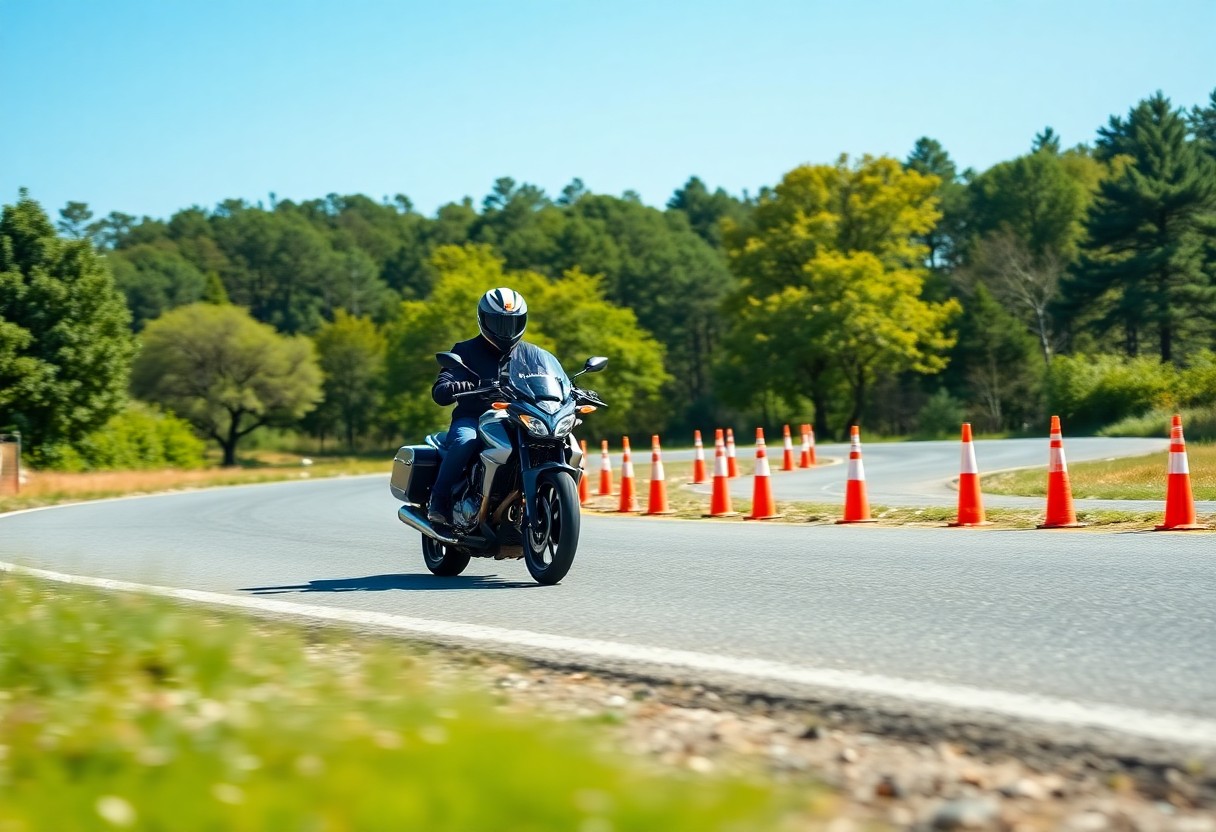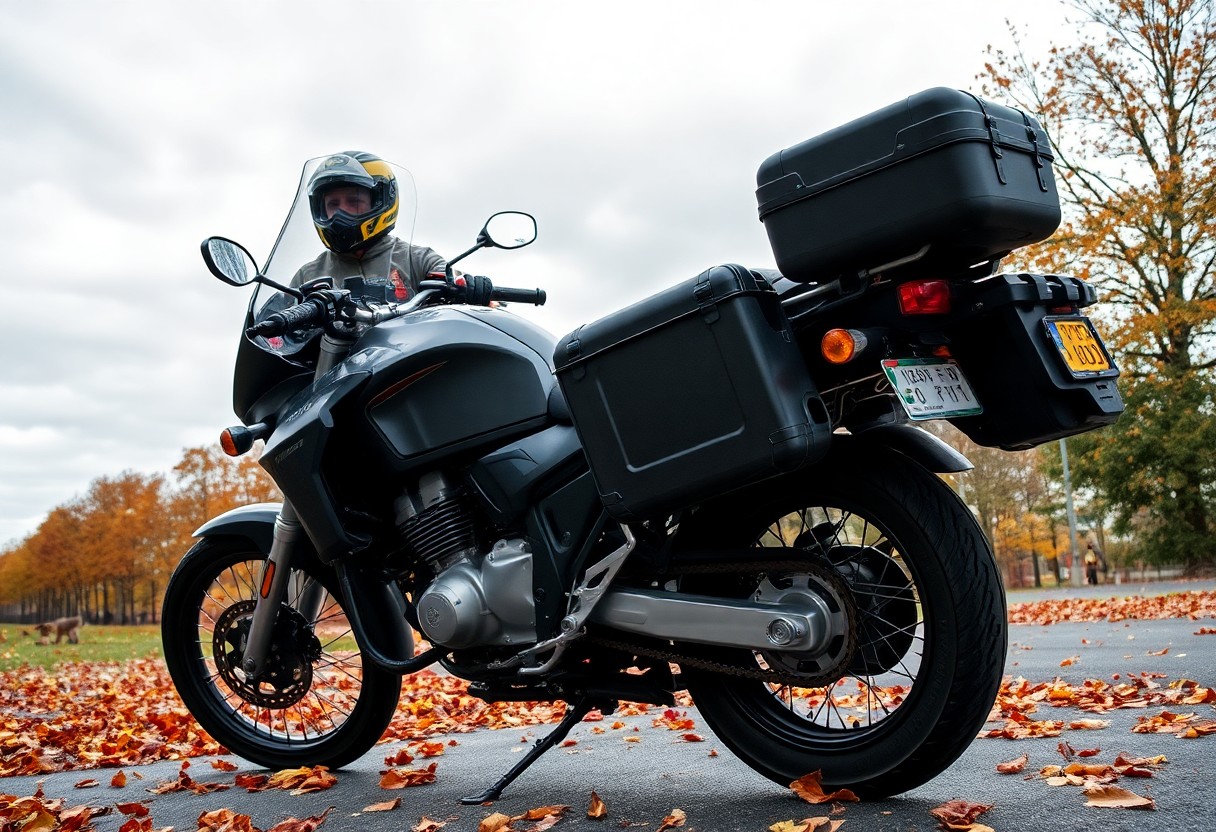Many riders underestimate the importance of continually improving their skills behind the handlebars. To enhance your motorcycle riding skills and ensure a safer experience on the road, you must focus on several key areas including advanced techniques, proper gear usage, and effective risk management. By incorporating these practices into your routine, you’ll not only increase your safety but also your enjoyment of each ride. Join us as we explore actionable tips and strategies to elevate your riding proficiency and keep you safe in all conditions.
Understanding the Basics of Motorcycle Safety
For any motorcyclist, grasping the fundamentals of motorcycle safety is important for enjoying a safe riding experience. This involves familiarizing yourself with your bike, the rules of the road, and environmental conditions. Prioritizing safety not only protects you but also ensures the safety of other road users. Regularly assessing your skills and knowledge allows you to stay aware and alert, ultimately making you a more capable and responsible rider.
Importance of Riding Gear
Riding gear plays an important role in protecting you from injuries in the event of an accident. Quality gear like helmets, gloves, jackets, and boots minimizes the risk of serious injuries by providing cushioning and protection against abrasions. By investing in the right gear, you can ride with confidence, knowing that you are taking the necessary precautions to safeguard your well-being.
Basic Motorcycle Controls
Riding a motorcycle requires a good understanding of its basic controls, which include the throttle, brakes, clutch, and gears. Knowing how to operate these components will significantly enhance your riding experience and safety. Mastering these controls is fundamental to developing your skills and ensuring smooth operation while navigating various road conditions.
It is vital to familiarize yourself with each control’s function. The throttle controls your speed; the front and rear brakes regulate your deceleration, while the clutch allows you to shift gears smoothly. Understanding how to coordinate these controls effectively is the key to maintaining balance and maneuverability on your motorcycle. Regular practice with these basics will build your confidence and contribute to safer riding habits.
How to Improve Riding Techniques
Some of the most effective ways to enhance your motorcycle riding skills involve practicing specific techniques that contribute to overall safety on the road. Focusing on cornering, braking, and throttle control will not only boost your confidence but also increase your ability to handle various situations you may encounter while riding. Incorporate these exercises into your routine to ensure you are well-prepared for the challenges ahead.
Practicing Cornering Skills
For mastering cornering, you should focus on body positioning, throttle control, and the proper line through the turn. Practice in a safe environment, gradually increasing your lean angle and adjusting your speed while paying attention to your body posture on the bike. This will improve your cornering technique significantly, enabling you to navigate curves more efficiently and safely.
Mastering Emergency Braking
Skills in emergency braking can make a significant difference when it comes to avoiding potential hazards on the road. Understanding how to apply both your front and rear brakes effectively will help you stop quickly while maintaining stability. You should practice emergency stops in various conditions to learn how your motorcycle reacts and to familiarize yourself with the optimal pressure required for different surfaces.
Riding defensively and knowing when to initiate emergency braking are important aspects of your skill set. You can improve your braking technique by practicing sudden stops from different speeds and on different surfaces. Work on squeezing the front brake while gradually applying the rear brake to prevent skidding. Consistent practice will help you develop muscle memory, giving you the responsiveness needed to handle unexpected situations with confidence and control.
Tips for Enhancing Awareness on the Road
Any time you hit the road, enhancing your awareness is key to your safety. Here are some tips to improve your focus:
- Minimize distractions
- Stay alert and well-rested
- Use your mirrors frequently
- Be aware of your surroundings
Any improvement in awareness can significantly reduce risk and enhance your riding experience.
Scanning Your Environment
With effective scanning techniques, you can spot potential hazards before they become a problem. Regularly glance at your mirrors and look ahead for any vehicles or obstacles that could interfere with your ride. Scan intersections, driveways, and parked cars to identify road users who may be about to move. Keeping your head on a swivel helps you absorb necessary information and make informed decisions.
Anticipating Other Road Users
Environment plays a significant role in your overall riding safety. Understanding the behavior of other road users helps you to react appropriately. By anticipating their movements, you can keep a safe distance and make better decisions.
This level of anticipation comes with experience, as you learn to read the intentions of other vehicles, cyclists, and pedestrians. Pay close attention to their positioning and indicators, and always consider what might happen if someone makes a sudden move. Keeping a safe margin allows you to react effectively, should the unexpected occur. Developing this skill enhances your ability to navigate complex traffic situations successfully.
Factors Affecting Motorcycle Stability
Now, several factors can significantly impact your motorcycle’s stability on the road, influencing how comfortably and safely you ride. These factors include:
- Weight distribution
- Road surface conditions
- Your riding posture
- Suspension settings
- Tire condition
After understanding these elements, you can make adjustments to improve your ride and enhance your safety.
Tire Condition and Pressure
Assuming your tires are in good condition and properly inflated is imperative for maintaining stability. Proper tire pressure allows for better grip on the road, while the tread’s condition can determine your ability to navigate various surfaces effectively.
Weather Conditions
Motorcycle riding is heavily influenced by weather conditions, which can affect traction and visibility. Rain, snow, or strong winds may alter the handling of your bike, making it vital to stay alert and adjust your riding style accordingly.
Plus, it’s important to assess how weather elements like temperature and humidity can impact road surfaces. Wet or icy conditions can dramatically reduce grip, while high winds can make it difficult to maintain control. By taking proper precautions based on the weather, you improve your riding experience and ensure safer travels on your motorcycle.
How to Maintain Your Motorcycle for Safety
Not maintaining your motorcycle can lead to dangerous situations on the road. Regular maintenance ensures that all components of your bike are functioning optimally and can greatly reduce the risk of accidents. By routinely checking systems like brakes, tires, and lights, you enhance not only your own safety but also that of other road users.
Regular Maintenance Checks
Some key maintenance checks include inspecting your tires for wear, examining brake pads and fluid levels, and ensuring your lights are fully operational. By sticking to a routine, you can catch any potential issues early, preventing breakdowns and enhancing your overall riding experience.
Understanding Warning Lights
To ride with confidence, it’s vital to be aware of the warning lights on your motorcycle’s dashboard. These indicators alert you to any potential issues that need addressing, such as low oil pressure or overheating, allowing you to take timely action before it becomes a serious problem.
Motorcycle warning lights serve as your first line of defense against mechanical failures while riding. Familiarizing yourself with what each light means can help you diagnose issues before they escalate. Make it a habit to check the owner’s manual to decode these signals accurately. This knowledge equips you with the information needed to react appropriately, enhancing both your safety and your motorcycle’s performance.
Advanced Riding Techniques
Once again, honing your motorcycle skills is vital for your overall safety. Advanced riding techniques can significantly enhance your ability to navigate various road conditions and situations. Consider the following methods:
| Techniques | Description |
|---|---|
| Countersteering | Lean the bike by pushing the handlebars in the opposite direction to make sharp turns. |
| Throttle Control | Use smooth throttle inputs to maintain traction and stability during acceleration. |
| Body Positioning | Shift your weight correctly for better cornering and braking. |
| Trail Braking | Gradually apply brakes while entering turns to shift weight forward. |
Defensive Riding Strategies
For enhancing your road awareness, employing defensive riding strategies is crucial. This approach involves staying alert to your surroundings, anticipating potential hazards, and maintaining a safe distance from other vehicles. By practicing these strategies, you can prepare for unexpected situations and react appropriately to avoid accidents.
Group Riding Safety
The dynamics of group riding require additional precautions to ensure everyone’s safety. You need to communicate clearly and establish a system for signals, maintaining a staggered formation, and keeping an appropriate distance from other riders. This approach helps everyone react better to road conditions and increases overall visibility.
Plus, it’s beneficial to designate a leader and a tail rider in your group. The leader sets the pace and route, while the tail rider watches over everyone behind. You should also plan regular stops to regroup, ensuring no one gets lost. Effective communication helps prevent misunderstandings and keeps the group cohesive, which is vital for safety during group rides.
To wrap up
With this in mind, enhancing your motorcycle riding skills is necessary for maintaining safety on the road. You should invest time in training, practice defensive riding techniques, and stay updated on the latest safety gear. Regularly assessing your riding abilities and seeking feedback will empower you to improve continually. By adopting these practices, you not only boost your confidence but also decrease the likelihood of accidents, ensuring a safer experience on your motorcycle.


